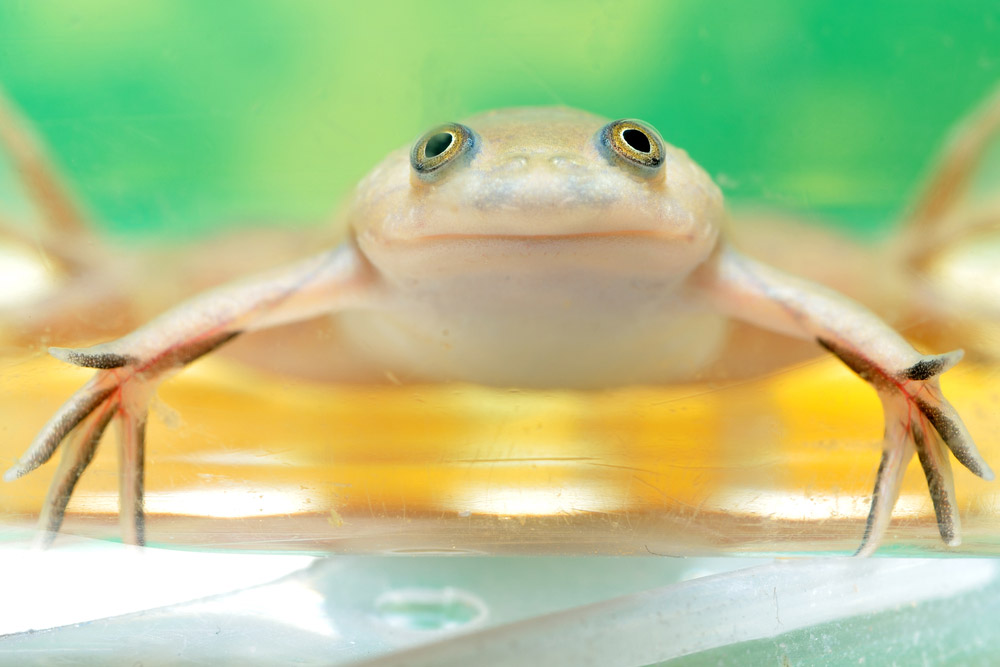Scientists Got Adult Frogs to Regrow Limbs. It's a Step Toward Human 'Regeneration'
Posted on Categories Discover Magazine

Scientists got African clawed frogs, similar to this one, to regrow limbs in the lab. (Credit: D. Kucharski K. Kucharska/shutterstock)
Millions of people live with amputated limbs that are gone forever. But that might not be the case forever. For the first time, scientists have shown that adult frogs can regrow amputated legs. They say the approach can work in humans, too. “There is no reason that human bodies can’t regenerate,” said Tufts University biologist Michael Levin, who led the new research.
“This is the first proof-of-principle of a roadmap for regenerative therapy in human medicine, well beyond limbs,” he added. “Many problems — from birth defects to traumatic injury, aging and even cancer — can be solved if we understood how to induce organs to regrow in place.”
Regrowing Limbs
Ultimately, that’s what Levin and his research team at Tufts University in Medford, Massachusetts, want to figure out: how cells cooperate to build a complex three-dimensional organ and “stop exactly when it’s done.” But first, the scientists needed to try to reproduce organ growth in animals that don’t regenerate. Adult African clawed frogs, a common laboratory animal known in scientific circles Xenopus laevis, fit the bill. The amphibians are not normally regenerative but have some tissue renewal capacity, just like humans.
“We were hoping to show that adult Xenopus frogs are capable of limb regeneration, and to find a trigger that allows it to happen,” Levin said.
Hormone Kick-Start
The trigger the team found is progesterone, the sex hormone involved in the female menstrual cycle, pregnancy and breastfeeding. The scientists applied the compound to frogs’ amputated back legs with a wearable bioreactor device for 24 hours. Then they watched as the limb regenerated.
Frogs that did not receive the progesterone treatment developed cartilaginous spikes at the amputation site, whereas ones that wore the hormone delivering bioreactor for one day, regrew a paddle-shaped appendage. Differences between the frogs were visible within a few weeks, Levin and team revealed today in the journal Cell Reports.
Within about six months the regenerated limbs stopped growing, but the development had progressed to the point where under typical growth, fingers and toes appear. The regrown limbs had increased bone volume and density, bundles of well-organized nerve fibers and major blood vessels — all of which translated to frogs with regrown limbs that could move and swim with activity levels that were indistinguishable from frogs with intact legs.
The research shows that spurring regeneration in vertebrate animals is possible and paves the way for similar work in mammals and eventually humans.
“We may be able to induce the body to do what it does best, build complex organs,” Levin said. “The potential scope is huge.”